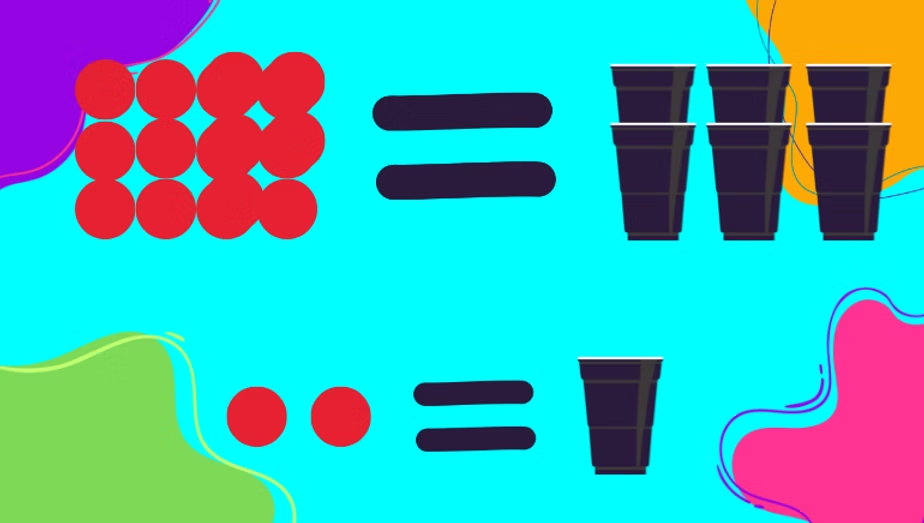The Cookie Trick That Helps Kids Master Multi-Step Equations
- Susan Ardila

- Jul 2
- 5 min read
Updated: Jul 3

Mastering Multi-Step Equations with Cookies and Milk
If your child shudders trying to master multi-step equations—or if your students instantly check out the moment variables appear on both sides of an equal sign—this one’s for you.
Let’s be real: abstract algebraic equations can feel like gibberish when you’re still grappling with the basics. And traditional explanations? Dry as a cracker and twice as confusing. That’s why I teach algebra with something a bit more familiar (and way more fun): cookies and milk.
Yes, really.
Over the years, I’ve developed a multisensory, metaphor-rich approach that doesn’t just tell students what to do—it helps them see it, touch it, and connect it to real logic that actually sticks. Whether you're a parent supporting your child at home or a teacher looking for engaging strategies, here’s how we turn math stress into math success.
Step 1: Separate Variables and Constants (a.k.a. Keep the Cookies Out of the Milk)
Let’s say we’re working with this equation:
-3x - 6 = 3x + 6
We start with two sets of hands-on manipulatives:
Cups = Variables (x)
Cookies = Constants (numbers)
And we color-code them:
Black cups and yellow cookies = negative values
Red cups and red cookies = positive values
So visually:
Left side: 3 black cups (–3x) and 6 yellow cookies (–6)
Right side: 3 red cups (3x) and 6 red cookies (6)

Now let’s meet our star of the show: Miss Function. She’s picky. She loves cookies—but only if they’re crisp. And she refuses to eat cookies dunked in milk.
That means we need to separate the cookies (constants) from the milk (variables). In algebra-speak: get all variables on one side, and all constants on the other.
To do that, we use zero pairs—pairs of equal and opposite values (like +3x and –3x, or +6 and –6) that cancel each other out when added together.
We add 3x to both sides and subtract 6 from both sides:
-3x + 3x - 6 = 3x + 3x + 6 - 6Which leaves us with:
-12 = 6xMiss Function is thrilled. Her cookies are finally safe from sogginess.

Step 2: Simplifying Algebraic Expressions: Combining Like Terms
After separating cookies and milk, simplify the equation further by combining like terms.
Using our earlier example:
Left side: -3x + 3x equals 0, and -6 - 6 equals -12.
Right side: 3x - 3x equals 0, and 6 - 6 equals 0.
Now, our simplified equation is: -12 = 6x

Step 2: Combine Like Terms (or: Clean Up the Kitchen)
Let’s slow this down further for our younger learners or anyone who’s still building their math confidence.
When we “combine like terms,” we’re basically just tidying up. Think of it like grouping all your cups together and all your cookies together to see what’s left.
So in our example:
On the left side: –3x and +3x cancel out (they make zero), and –6 and –6 become –12.
On the right side: 3x and 3x become 6x, and 6 and –6 cancel out to 0.
So what’s left?
–12 = 6xNow we’ve gone from a big messy equation to something we can actually work with.
Step 3: Divide to Find the Value of x (a.k.a. Balance the Snack)
Here’s where we solve for x—basically, we’re figuring out how many cookies each cup gets.
We’ve got 6 cups and 12 cookies. To split them up evenly:
–12 ÷ 6 = xWhich gives us:
x = –2We can even draw or build this part out: Show 6 cups with 2 cookies each. If you’re using actual manipulatives, this is a great hands-on moment that makes the math real.
This is the “aha!” moment for so many students, and the physical act of distributing the cookies makes the concept of division far more concrete.

Step 4: Explore Special Cases (Infinite Cookies or... None at All)
Some equations don’t have just one answer—they have every answer, or no answer at all!
Scenario A: Infinite Solutions
Equation: 5x – 3 = 5x – 3
We subtract 5x from both sides:
5x – 5x – 3 = 5x – 5x – 3Simplifies to:
-3 = -3This is always true, no matter what x is. So any number will work. This is called an identity equation with infinite solutions.
To visualize it: you’ve got identical stacks of cookies and cups on both sides of the table. Rearranging them still leaves everything exactly the same.
Scenario B: No Solution
Equation: –3x – 4 = –3x + 7
Add 3x to both sides:
–3x + 3x – 4 = –3x + 3x + 7Simplifies to:
-4 = 7That’s never true! Which means there’s no solution. This kind of equation has no value for x that would make it work.
In Miss Function’s world, this is like saying “I have no cups of milk, but somehow I still have 11 cookies.” Doesn’t add up.
Step 5: Why This Cookie-and-Milk Method Matters
When students struggle with multi-step equations, it’s rarely because they’re lazy or inattentive. More often, they simply don’t have a clear mental model of what’s happening.
By giving them a physical, visual, and even silly analogy (Miss Function and her cookie preferences), we’re doing more than making math fun. We’re giving them a way to see and understand structure, to recognize patterns, and to build confidence with abstract reasoning. A way to Master Multi-Step Equations!
If your child is younger or still learning basic equations, this same model works wonders when scaled down. You can use just cups and cookies to introduce what a variable even is—or to walk through simple one-step equations.
Want More Help Making Math Click?
If your child is struggling with the basics before they even get to algebra, you might want to explore why the CRA method (Concrete–Representational–Abstract) isn’t always working—and what to try instead. Check out my blog: Why the CRA Math Approach Isn’t Working for Your Child
And for more help with algebra specifically, don’t miss: Cracking the Code: Tips for Mastering Algebraic Equations
Ready to Watch Math Confidence Soar?
If your child is feeling lost in algebra—or you’re tired of the nightly homework meltdowns—schedule a free consultation today. At MindBridge Math Mastery, we specialize in creative, individualized, multisensory math strategies that actually work.
Let’s make math make sense again.
Book Now-Session fill up quick!

About the Author:
Susan Ardila is a highly experienced educator and founder of MindBridge Math Mastery, specializing in making math accessible and enjoyable for students of all abilities. With over a decade of teaching experience and a master's degree focused on multisensory math education, Ms. Susan helps children and teens build confidence and achieve lasting success in math.





Comments